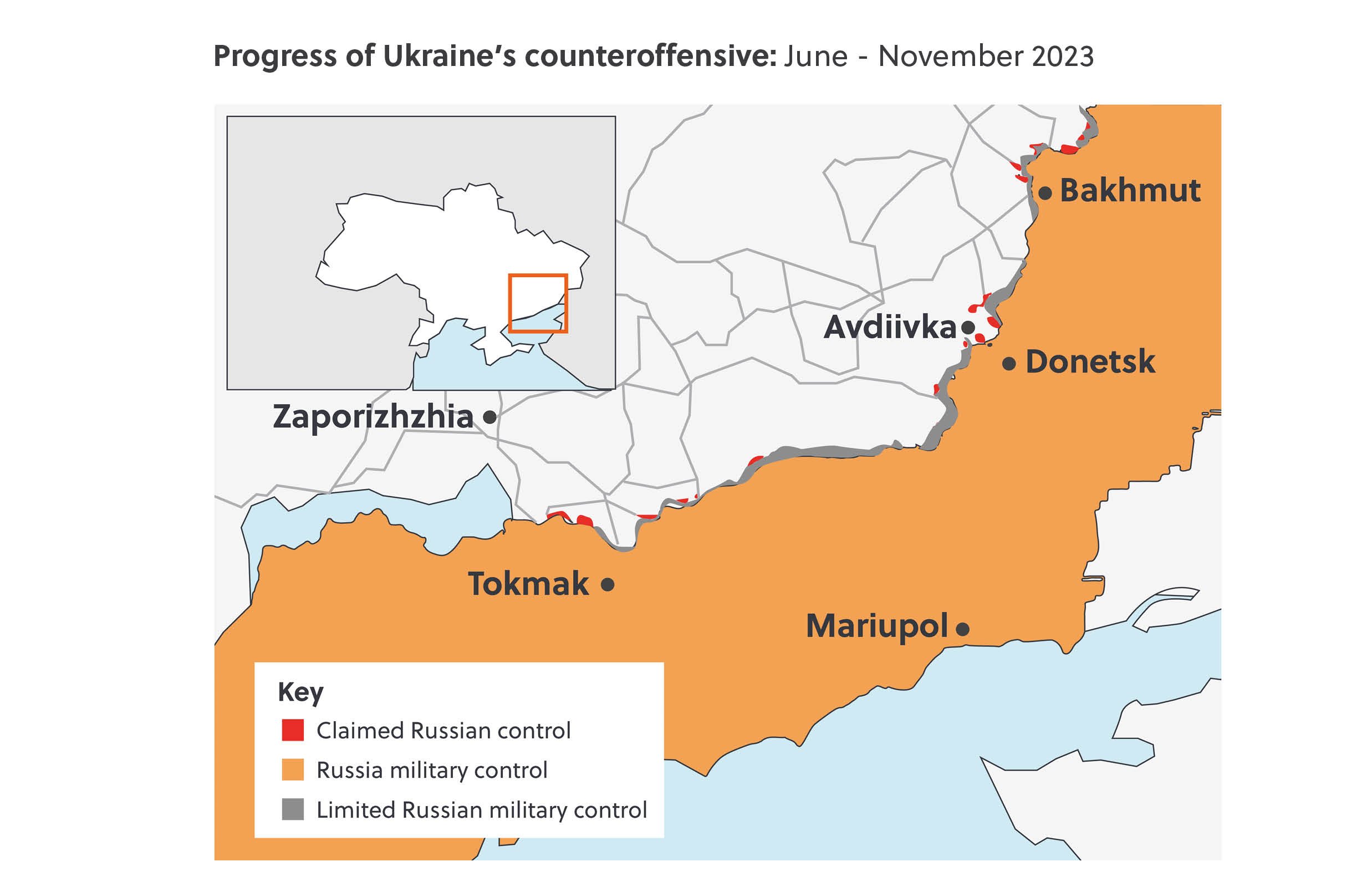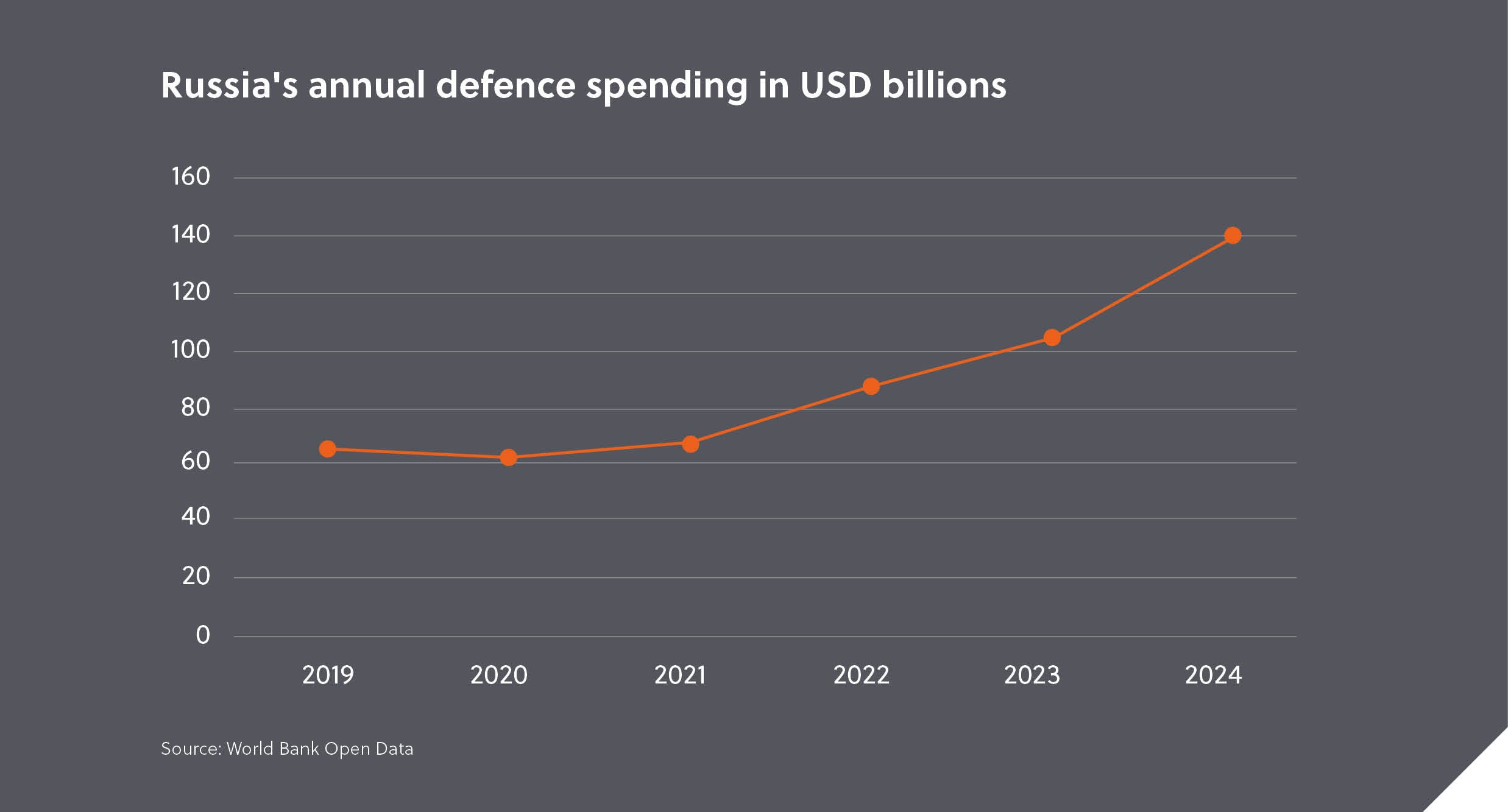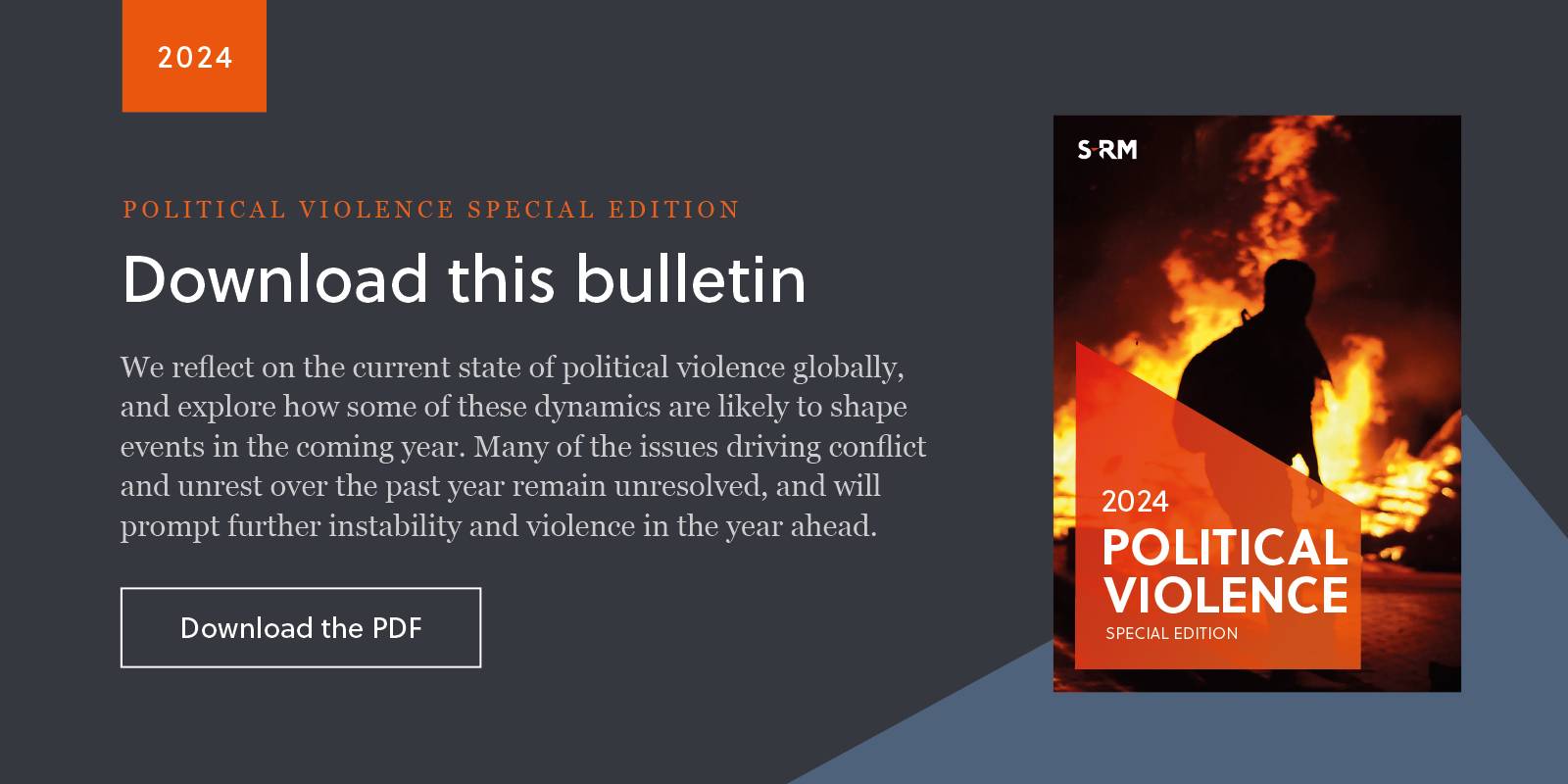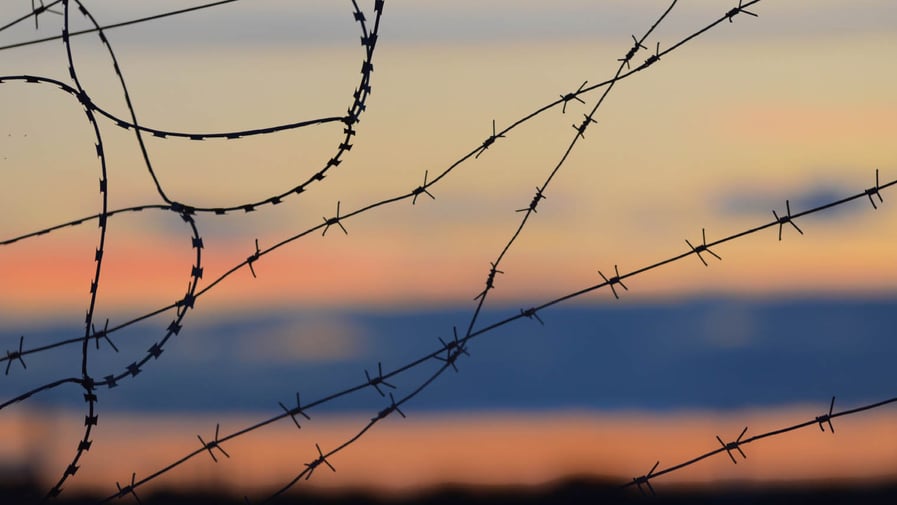Saif Islam and Richard Gardiner explore some of the major developments that may influence the trajectory of the conflict in the new year.
In 2024, the Russia-Ukraine war is poised to reach a critical juncture, where the starkly conflicting objectives of both countries will contribute to a deepening impasse. Ukraine, steadfast in its pursuit of territorial integrity, is determined to reclaim regions occupied by Russia since the 2022 invasion. President Volodymyr Zelenskyy, feeling pressured by the limited gains of the 2023 counteroffensive and concerns about declining Western military aid, will be tempted to launch another counteroffensive in the next six months, likely in early spring. Complementing this goal is Ukraine’s quest for robust security guarantees from the West, aiming to fortify its defences against future Russian aggression. Russia’s ambitions are diametrically opposed. It seeks to consolidate and expand its territorial conquests in Ukraine in 2024, particularly in eastern and southern regions, and extend its political influence within the country with the objective of permanently undermining Ukraine’s chances of joining NATO. In contrast to Ukraine, Russia appears to have the advantage of time and appears content to prolong the conflict.
These clashing aspirations underscore the reality that neither Ukraine nor Russia is yet prepared to make any major compromises. However, this state of affairs is not set in stone. Several disruptors are likely to emerge in 2024 that, either individually or collectively, could substantially tilt the balance of the conflict, or change the nature of the conflict entirely.
1. Reduced western military aid for Ukraine
In 2024, the conflict’s direction will effectively be determined by the degree of military support from Ukraine’s Western allies. The US, the largest single-country donor that has given more than USD 44 billion in military aid since Russia launched the invasion, is grappling with internal political turmoil. Congressional gridlock, exacerbated by an isolationist wing within the Republican Party, particularly in the House of Representatives, has led to a slowdown in aid allocation. As the US approaches the 2024 presidential election, there is growing resistance within Republican factions against continued support for Ukraine. While President Joe Biden is not directly beholden to these factions, the election outcome could influence future aid decisions, potentially leading to delays or termination of support. In Europe, the rise of far-right populist parties and other factors are increasingly dividing opinion on support to Ukraine. Countries like Poland and Slovakia have already ceased military aid, and the recent electoral success of the far-right Freedom Party in the Netherlands is raising questions about the country’s continued leadership in supplying fighter jets to Ukraine. The global focus on the Israel-Hamas conflict has also diverted attention, and arguably resources, from Ukraine.
While the US and other major partners continue to assure Ukraine that military aid will not cease – Germany, for instance, has vowed to double its aid to USD 8.5 billion in 2024 – the overall level of support will inevitably be subject to a confluence of global and domestic factors. Western governments will likely find it increasingly difficult to convince their citizens about maintaining, let alone significantly increasing, the current levels of aid in 2024, not least due to the modest achievements of the Ukrainian counteroffensive in 2023. These factors collectively signal a potential weakening of Ukraine’s bargaining power in any future peace negotiations with Russia. With reduced military backing, Ukraine will likely struggle on the battlefield and may even feel pressured into accepting a less than ideal peace deal with Russia.

2. Russia doubles down no matter the cost
Banking on the West’s purported ‘Ukraine fatigue’ and the possible reduction in military aid, Russia appears to be doubling down on its commitment to the war. According to its latest budget, Russia is set to increase its defence and security spending by some 30 percent in 2024, totalling almost USD 140 billion, a third of total government expenditure. Barring any abrupt tightening of Western sanctions that make the purchase of Russian oil and gas unfavourable for countries like China and India, this level of spending is likely to significantly enhance Russia’s ongoing and expanding war efforts over the coming year. However, the substantial costs of waging war puts economic development at risk through 2024 and beyond, shrinking the middle class and increasing social inequality.
The augmented defence budget is primarily aimed at bolstering production of military equipment and ammunition. Since the war started, Russia has doubled its domestic manufacturing of artillery shells, now producing 2 million shells annually. Additionally, North Korea has reportedly exported 1 million artillery shells since September 2023, while Iran continues to deliver attack drones. Russia is still unlikely to achieve production levels above the 10 million shells necessary to sustain the firing rate of 2022. However, considering the ammunition supply constraints of Ukraine’s backers, Russia will likely retain fire superiority in 2024, causing considerable difficulties for defending Ukrainian forces.
Ukrainian officials have warned President Vladimir Putin will announce a full mobilisation after the Russian presidential elections in March 2024. Although Russian officials have so far denied the possibility of future rounds of mobilisation due to its domestic unpopularity, even a partial mobilisation after the polls would have a direct impact on the battlefield. While mobilised soldiers typically struggle to make a meaningful contribution to an army’s offensive capabilities, they would make a notable impact in further bolstering Russian defensive lines. Such fortifications would not only complicate Ukraine’s counteroffensive efforts but also give Russian generals the confidence to push for more territorial gains in 2024.

3. War intensification fears amid NATO-Russia standoff
The conflict in Ukraine, while primarily localised, harbours the risk of escalating into a broader confrontation between NATO and Russia. In early December 2023, Polish security agencies warned of a potential Russian attack on NATO’s eastern flank within three years. However, the greatest threat in the next 12 months lies in the possibility of miscalculations or accidental incidents sparking a sudden escalation. Throughout the conflict, there have been instances that highlight this precarious balance. For example, in September 2022, a Russian SU-27 fighter jet fired missiles close to a UK surveillance plane over the Black Sea. This incident, though downplayed by both NATO and Russia, underscores the volatility of the situation and the ease with which a misstep could lead to a wider conflict.
In 2024, several developments threaten to exacerbate these tensions. For instance, Russia is poised to escalate its hybrid warfare campaign, employing tactics like intensified cyber-attacks on NATO members or orchestrating disinformation campaigns within countries to undermine NATO support for Ukraine. However, these actions carry the risk of escalating into direct confrontation, especially if the impacts of these hybrid attacks, such as the crippling of national energy infrastructure, are severe. Greater Western pressure on Russia’s sanction-busting moves could also heighten tensions. For instance, Russia has been turning off tracking systems on vessels for oil transport, primarily to Asian markets, circumventing Western sanctions and generating much-needed oil revenues to fund its military operations in Ukraine. In response, the EU is considering deploying Danish naval forces to monitor Russian shipping activities in the western Baltic Sea. Considering Denmark is a NATO member, the potential for a small incident to trigger a significant escalation cannot be underestimated, especially in a context where geopolitical stakes are high and the margin for error is slim.






